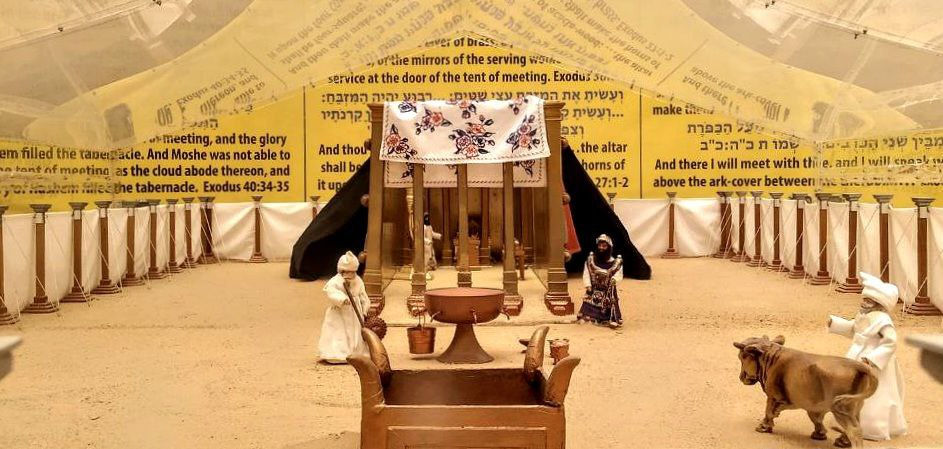Today is right during the Jewish holiday season, which refers to the three big holidays celebrated at the beginning of the Jewish year: Rosh Hashanah - the New Year, Yom Kippur – the day of atonement, and Sukkot – The feast of tabernacles.
With Rosh Hashana behind us, we are about to enter Yom Kippur. In the Torah, Yom Kippur revolves around the existence of a temple amidst Israel. Today, we do not have a temple, but Yom Kippur is still regarded as a unique holy day. It is a day of fasting, prayer, and overall silence because the roads are almost completely empty of cars.
Despite the absence of a temple, I began to ponder the meaning of this day according to the Torah.
A Torah Introduction to Purity and Impurity
At Mount Sinai, Moses received instructions to build the Tabernacle, allowing God's presence to dwell among the children of Israel. The construction of the Tabernacle is detailed in the Book of Exodus. Immediately after its construction, it is noted that the glory of the Lord filled the Tabernacle (Exodus 40:34). From that moment on, the place became sacred. Immediately after, we move to the Book of Leviticus, and laws related purity and impurity, also called clean and unclean, are introduced (chapters 11-15). When reading these laws, focusing on unclean acts, one can see that they are not extraordinary actions, but rather common occurrences in our lives, such as childbirth, a woman's menstrual cycle, sexual relations, and death. To transition from an unclean state to a clean state, a specific purification ritual for each case must be performed.
Cleanness and Uncleanness in Relation to Holiness
To understand cleanness, which is a pure state, and uncleanness which is an impure state; one must grasp the distinction between the sacred and the secular. The sacred refers to physical areas that have a contact with divinity or related to divine service, and they are holy. Every place that is not both sacred and holy, is therefore secular or common. Once a place is defined as sacred, everything secular must be clean to come into contact with the sacred.
In essence, "purity" and "impurity" or "clean" and "unclean" are definitions of what is permissible and what is prohibited in relation to holiness. In the wilderness, the Tabernacle was the sacred place, and later, the Temple became the sacred place. Anything outside these areas was considered secular. The actions deemed unclean according to the Torah are ordinary and unavoidable, with nothing inherently wrong with them, as long as they occur in secular contexts.
However, when one needs to come into contact with the sacred, such as for offering sacrifices or donations, they must examine their state—clean or unclean. If unclean, they must perform the purification ritual, because if the uncleanness touches the sacred it defiles it. Uncleanness is therefore negative, only in relation to holiness. In a secular context, outside the realm of the sacred, uncleanness is neutral.
The Intensification of Uncleanness
According to the Torah, uncleanness is an inevitable aspect of life, therefore keeping the distinction between clean and unclean is a must, a role that was ordained to the priests (Leviticus 10:10). Moreover, it can be argued that in relation to holiness, everything secular is inherently unclean unless purified. This assertion is based not only on the fact that uncleanness arises from everyday activities, but also from various descriptions, presenting uncleanness as a kind of contagion that can pass between people and even objects (Leviticus 15:4, 19, 23)
Anything that has not undergone purification remains in an unclean state. Since the sacred place, the Temple, is situated within the secular realm, it gradually absorbs impurity because of the uncleanness of the people around it.
Yom Kippur: Covering the Uncleanness, Atoning for sins
To prevent the escalation of impurity within the sacred space – the Tabernacle and later the Temple - which would desecrate it, a system of atonement was established.
This atonement is called in Biblical Hebrew "Kippur", which also translates to "cover"; and a designated day, Yom Kippur, is set aside for covering or atoning for all the impurities of the children of Israel. It is the only day in the year when the High Priest can enter the holy of holies, bringing the blood of the sacrifices to the Mercy Seat. The Mercy Seat itself is called in the Hebrew "Kapporet", from the same root of "Kippur", because it serves both as a covering for the ark and as the object of atonement.
The High Priest's role is to sprinkle the blood starting from the mercy seat in holy of holies, thus covering the uncleanness that entered the sacred place, which dwells among the children of Israel (Leviticus 16:16). After covering the uncleanness, the High Priest confesses the transgressions of the children of Israel over the scapegoat, which is to be sent to the wilderness (Leviticus 16:21). Next, the high priest is to bring burnt offerings to complete the atonement for the sins (Leviticus 16:33-34).
The High Priest: The man between the sacred and the secular
In the Torah, Yom Kippur includes a purification ritual for the Temple and the people, as described in Leviticus 16. The chapter revolves around the idea of separation between the sacred and the secular, and the preservation of holiness in the sacred place.
The uncleanness that emerges from various sources, according to Leviticus chapters 11 – 15, cannot be avoided. Therefore, God ordained a day for one man – the High Priest – to cover all uncleanness with the blood of the sacrifice, and atone for all sins and defilement, for everyone to stand completely clean and pure before the presence of God.
I encourage you all, this coming Yom Kippur, to deepen your reading in the book of Leviticus, and enrich your studies of the foreshadowing of Jesus' role as a mediator for atonement in the Torah.


Commentaires